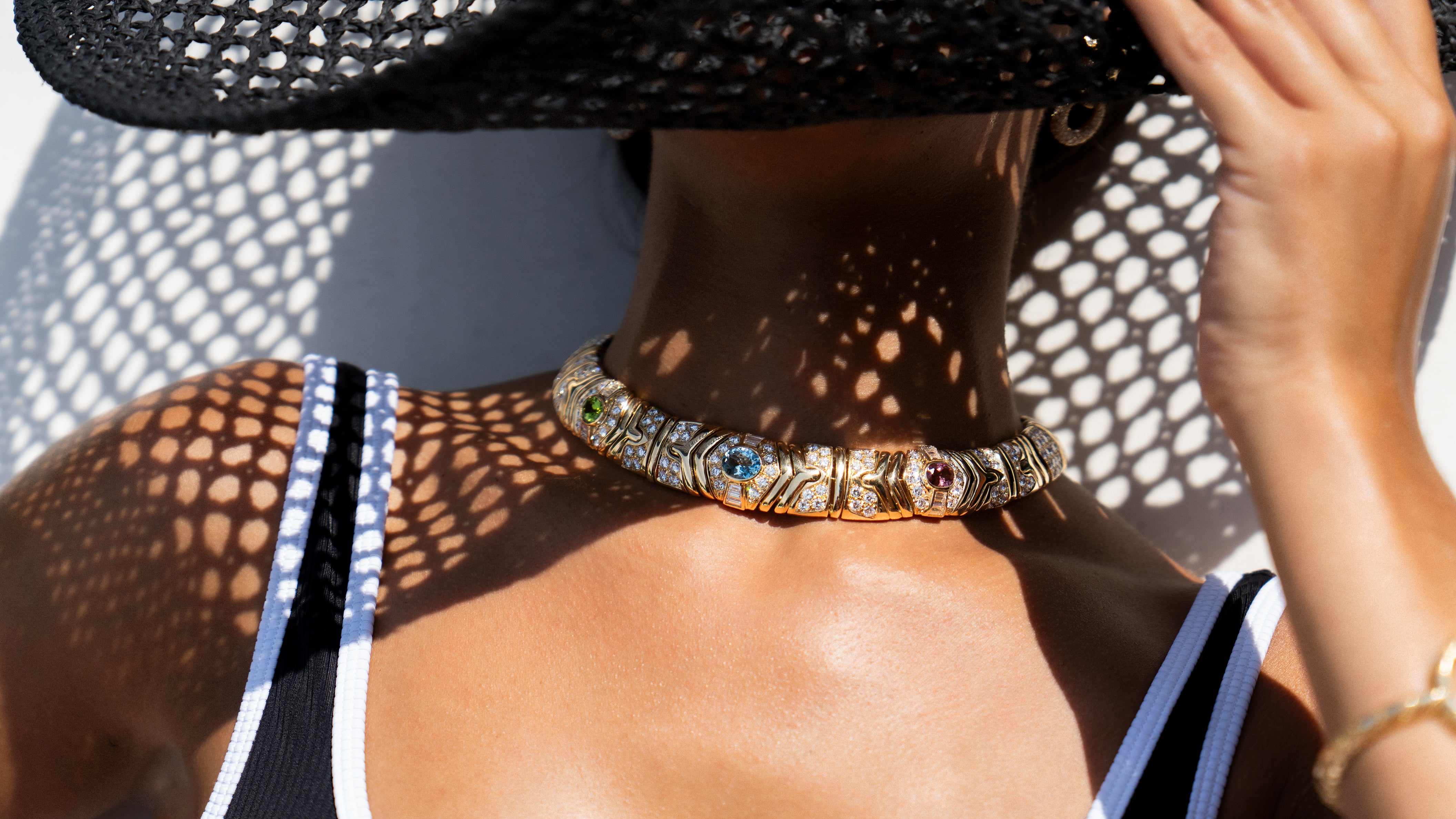Dreicer & Co.
Jacob and Gittel Dreicer arrived in New York City with a handful of Confederate currency and a dream of starting their own jewelry business. Decades later, when Cartier arrived in New York, they would view Dreicer & Co. as perhaps their biggest rival.
Coming to America
The Civil War had barely ended when Jacob Dreicer (aged 28) and his wife, Gittel (aged 24,) crossed the ocean to start a new life in America. Luckily, in addition to the valueless Confederate money, the pair brought with them a small assortment of pearls and gemstones, which they’d sewn into the lining of their clothes. Both husband and wife had prior experience in the jewelry business, and with their meager supply of gemstones were able to procure a basement apartment and set up shop. There, Jacob took on the role of salesman, and Gittel looked after the gemstones, which included having the rough stones cut and polished.
It took several years for the business to take hold, but when it did, the little shop became a big sensation.
Moving Up
By 1876, Jacob Dreicer’s clientele included the cream of New York society. Adelaide Mott Bell, the wife of a wealthy investor, was an early advocate of Dreicer’s wares. She was reputed to have spent $6,000 for an emerald and pearl necklace. It was but one of the many pieces she would procure over time from the burgeoning jeweler.
Politicians and their wives also proved to be steady customers. President Garfield asked Dreicer to create a cameo in his likeness. Sadly, the piece was in production when Garfield was assassinated in 1881. Years later, Gittel would present the cameo to the late President’s son.
In 1884, Jacob Dreicer & Co. opened at 1128 Broadway in Manhattan. The storefront was fortuitously located around the corner from DelMonico’s restaurant, a favorite with the up-and-coming denizens. Jacob frequently dined there, taking one of his most exquisite pieces with him, and often made a sale to one of the restaurant’s patrons.
Dreicer’s specialty was in pearls, which were among the most popular adornments in the1870s and 1880s. To own a pearl strand from Dreicer’s was impressive, indeed. Still, it became apparent that Jacob’s skill with colored gemstones also managed to woo many a conservative customer.
The Grand Union Hotel in Saratoga Springs, New York, was a popular summer getaway for New York’s wealthiest residents. Dreicer opened a shop in the Grand Union that proved lucrative, particularly since the hotel was also an exclusive trysting place. Many a paramour was the recipient of a gift from Dreicer’s.
Jacob’s son, Michael, came of age in 1885. A graduate of Brooklyn College, he was positioned to take his spot in the family firm. Gittel Dreicer took her son to Europe and taught him all she knew about buying rough stones. Michael had an extraordinary talent for remembering pearls, a skill that was so finely tuned; he could identify stolen pearls even though they had been removed from their setting.
In 1892, the business changed its name to J. Dreicer & Son and moved to 292 5th Avenue.
The arrival of the new century heralded the peak of Dreicer’s success. Ida McKinley, the President’s wife, received many gifts created by Dreicer, diamonds being her gemstone of choice. The most famous of these was a sparkling tiara, featuring two diamond wings upon a circle of gold, designed to be worn as created or separated into a pair of brooches. The tiara, which had been out of the public eye for nearly a century, reappeared in 2014. It was purchased by the shop owner on the TV series Pawn Stars. The owner, in turn, graciously allowed the curators of the McKinley Presidential Library to acquire the tiara for their museum.
A Flagship Store
1907 was a banner year for what was by then called Dreicer & Co. Their flagship store was itself a luxurious setting that perfectly matched the exquisite jewels being offered for sale.
The Jazz Age created the perfect atmosphere for indulging in the lavish jewels produced by Dreicer & Co. Many a flapper in search of something unusual – and willing to spend what it takes – found Dreicer to be more than accommodating.
By and large, Dreicer & Co. was conservative in style, keeping in step with fashionable styles and trends, including Art Nouveau and Art Deco themes, but putting the emphasis squarely on quality and attention to detail, always within the boundaries of good taste.
Distinctive gemstones were displayed in minimal settings to best showcase the stunning qualities of the gemstones. Dreicer particularly favored pearls, sapphires, diamonds, emeralds, and rubies as the gemstones they most employed in their designs.
The End of an Era
Tragically, Michael Dreicer died suddenly in 1921, at the age of 54. His heartbroken father passed away 18 days later. The company was never the same, and in March of 1927, Dreicer & Co. closed its doors for good.
Who purchased the majority of the jewels from Dreicer’s heirs? Cartier.
